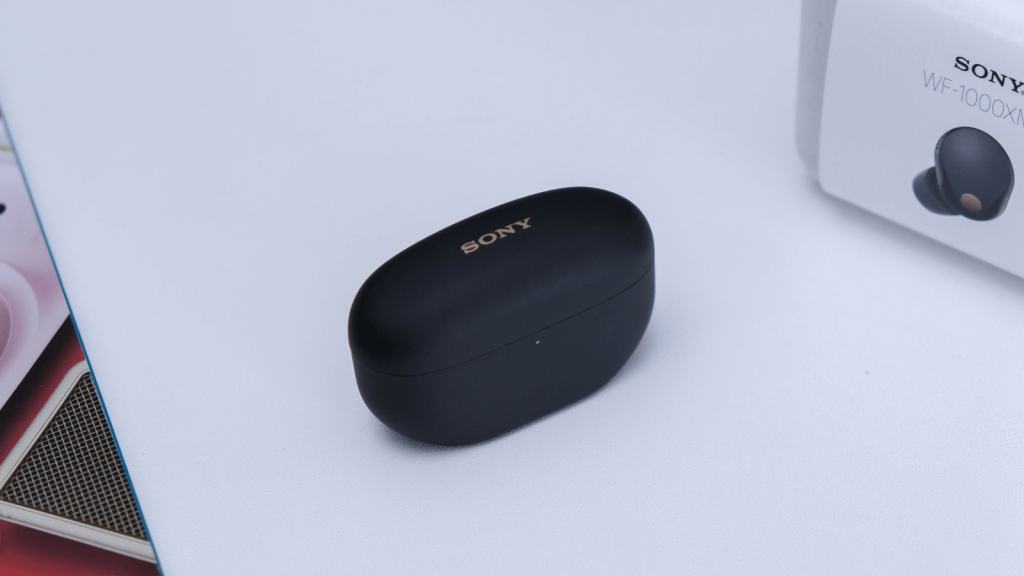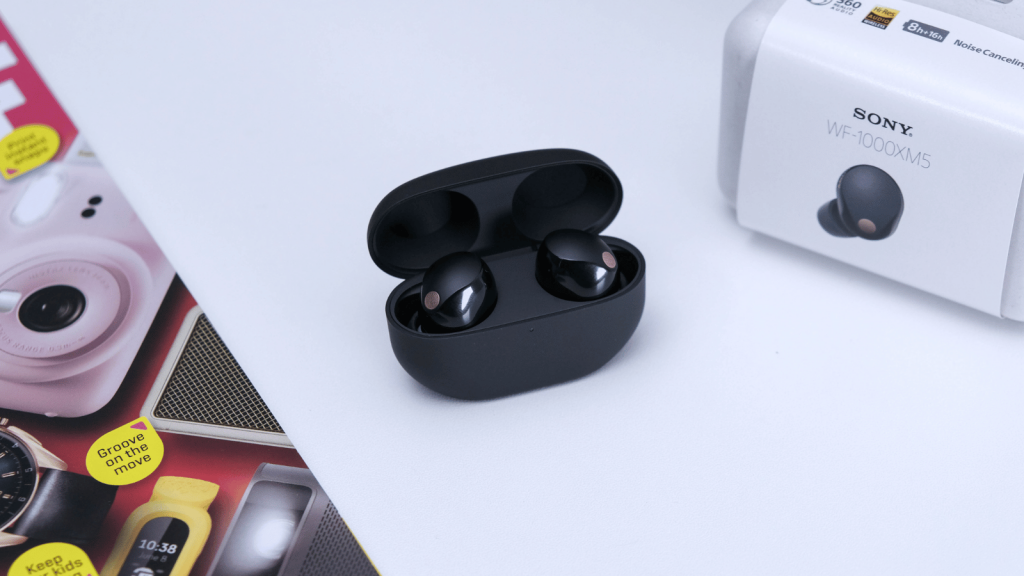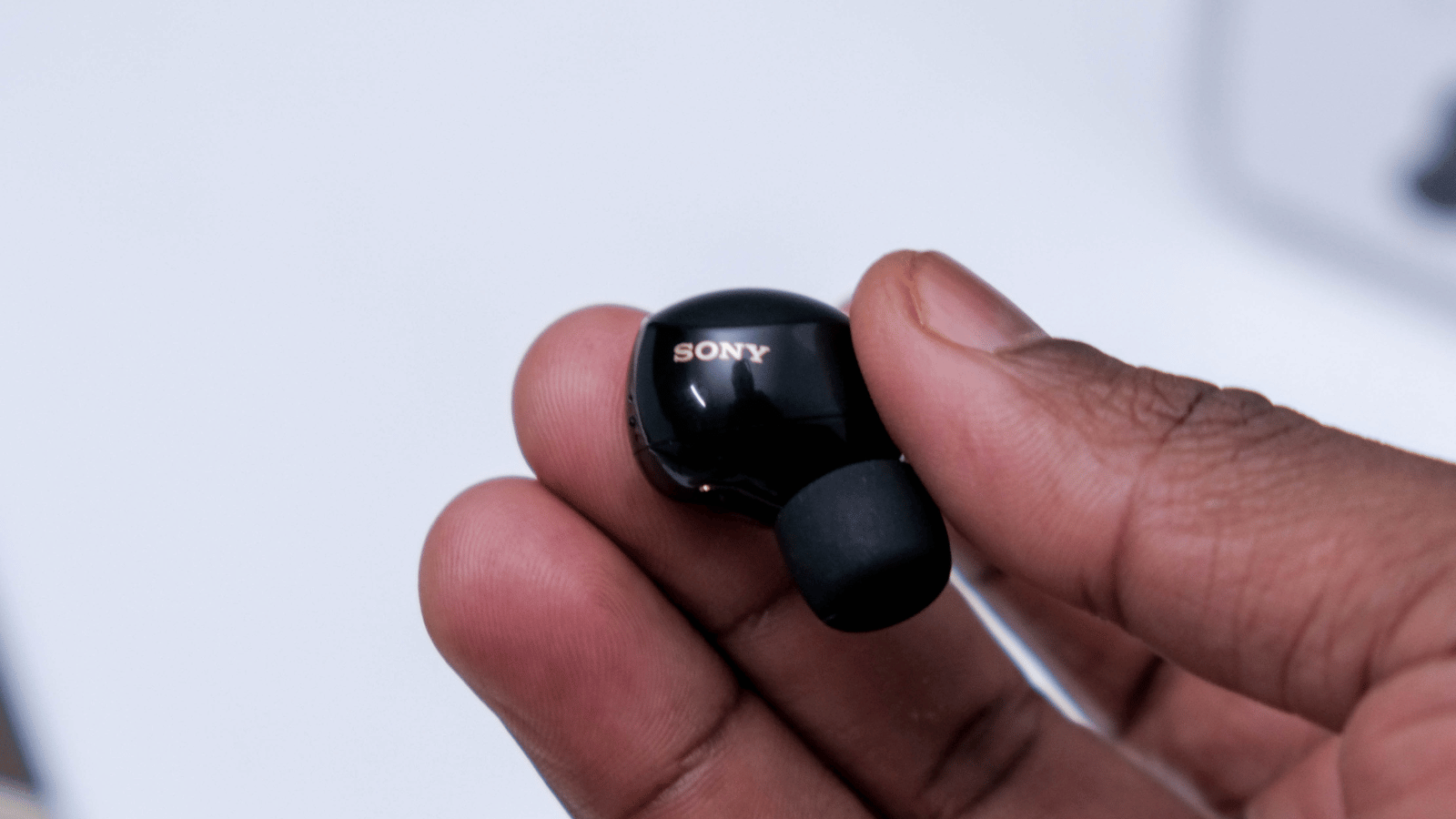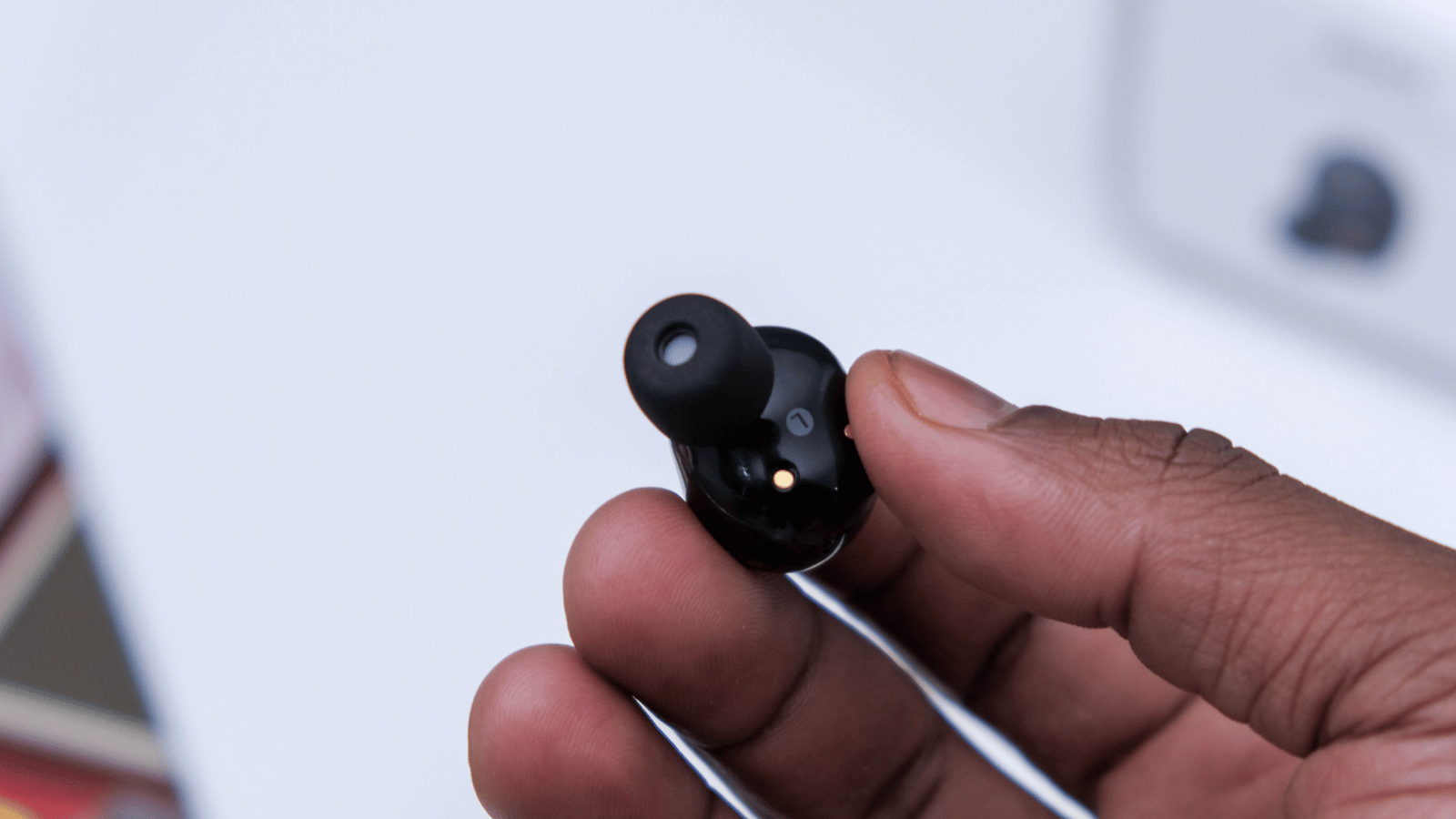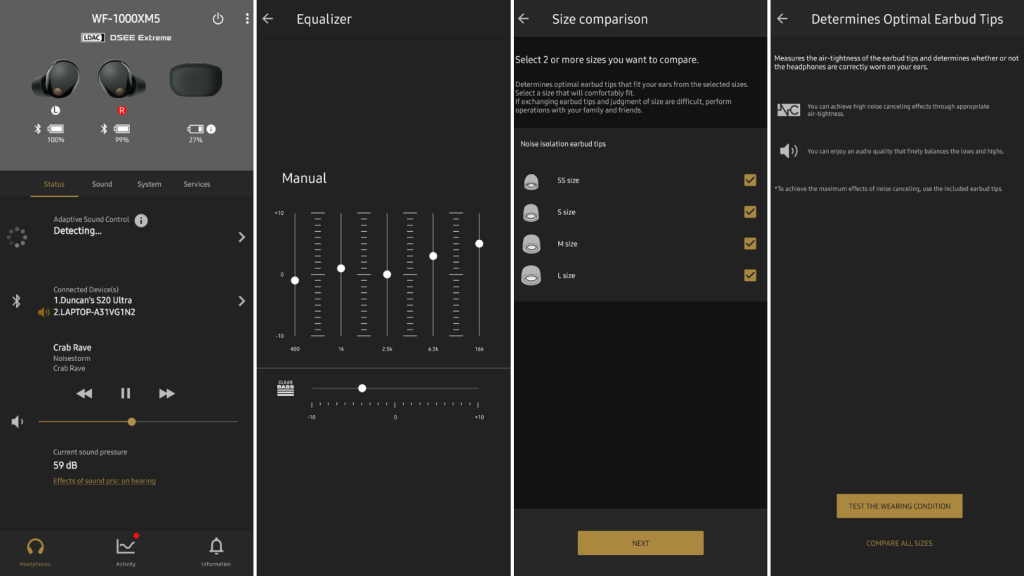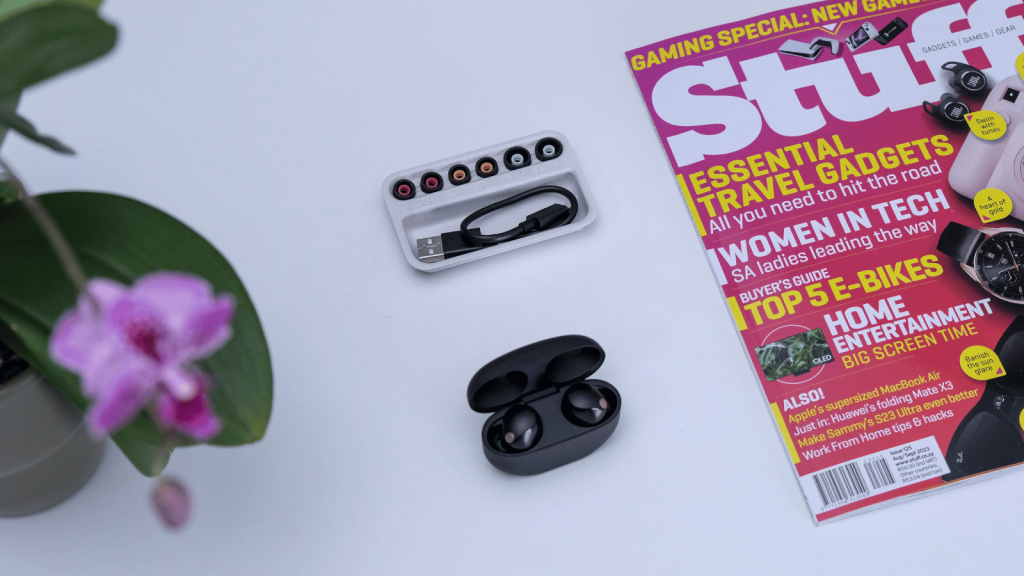Sony's highly anticipated WF-1000XM5 in-ear buds step in to replace the 1000XM4s. Those have been the buds to beat since they came out and no company has managed to compete on all fronts. While the M5s are a decent set of wireless in-ears with improvements made all round, the stiff competition has diminished their shine somewhat compared to their predecessors.
-
Design
-
Sound
-
Build
-
Battery
-
Features
-
Value
With the recent launch of Sony’s highly anticipated flagship WF-1000XM5 true wireless noise cancelling earbuds, the tussle between the usual suspects over who has the better premium set is closer than ever.
Sony isn’t being coy about its new buds, even going as far as calling them “The best truly wireless noise cancelling headphones on the market.” We’ll be the judge of that. Thanks.
An earbud by any other name
If you didn’t know any better you might get the impression that the folks at the Japanese company aren’t very good at coming up with names for their products. But now we know better. While the names might be a mouthful, it kinda makes sense.
The ‘WF’ here stands for ‘wireless free’ while the ‘WH’ of their WH-1000XM5 over-ear headphones stands for ‘wireless headphones’. Go figure. Sony uses a numbering system for its product tiers so that ‘1000X’ in the middle signifies that these are the flagship of its WF range, with the ‘M5’ (short for Mark 5) telling you they’re Sony’s fifth attempt to make the perfect set of ‘buds. The M4 set the bar rather high but they’re not long for this world. Is the M5 a worthy replacement? Should you upgrade if you’ve got the M4? In that order – yes, and probably not.
The immediately noticeable difference between the M4 and the M5 is size. Sony’s taken a significant step in the right direction with the small, lightweight construction of the WF-1000XM5. Its engineers have also shaved down the bulbous-shaped M4, making the M5 more ergonomic and comfier to wear. Each bud only weighs around 6g with the case adding another 39g.
As you’d expect from a premium product, the plastic feels adequately classy. Perhaps Sony thought adding a glossy sheen would elevate the M5’s classy look. Unfortunately, while some people might agree with that, this decision is the source of our biggest complaint.
It makes the buds so slippery that removing them from the case can be hazardous. We opted to squeeze each bud towards the sides of the case instead of trying (and repeatedly failing) to pinch them out. Their IPX4 rating might mean they won’t drown in workout-induced ear sweat but we’d strongly advise against handling them near a toilet bowl or swimming pool. This really shouldn’t be an issue for a premium product but the fact that it’s our biggest gripe with the M5 says a lot.
Juiced up in a jiffy
With all the shrinking and reducing Sony carried out on the WF-1000XM5, we were impressed to find battery life remained the same as the M4. The company reckons you’ll get eight hours of music playback from the buds with ANC enabled or 12 without it. There are two extra charges from the case for a total of 24-36 hours before you need to plug them in via the USB-C port or plop them down on a wireless charger. The former happens a bit quicker too, with a 3-minute charge providing an hour of playback.
Read More: Sony WF-C700N in-ear buds review – Little green monster
The new ergonomic shape, lightweight construction, and Sony’s proprietary foam tips all add to the M5’s comfy fit which we had no problem keeping in for six to eight hours a day. Sony has included an additional pair of super small tips in the box for a total of four sizes, making a good fit possible for a wide range of ears. We’d recommend taking the time to try them all, using the ‘Optimal Earbud Tip’ feature in the app to find the one that fits best. It can make a big difference.
One man’s noise is another’s music
The combination of a comfy fit with the tip’s foam material makes for really good isolation. That’s not generally something most people pay attention to but when it’s done poorly, it’s noticeable. Not here. These do it well, and give whatever you’re listening to the best chance of sounding great. It also means you won’t often miss the other end of your phone call in a noisy environment.
Although, most of the heavy lifting in that department is handled by Sony’s excellent active noise cancelling system. It’s comprised of six microphones in total, three per bud, and a second dedicated processor which Sony calls the HD Noise Canceling Processor QN2e. These work together to monitor and lower the volume of the world around you whether you’re commuting on noisy public transport, walking through a busy shopping centre, loitering around a construction site, or standing in a windy field. The improved mics and new processor garner better results than the outgoing M4 and certainly place the WF-1000XM5 among the best buds available but don’t yield the generational leap you might expect.
The same is true for the WF-1000XM5’s sound quality. They feature a generously warm consumer-friendly sound signature that we’ve come to expect from Sony. They have a downsloping response, meaning the low-end is emphasised the most – which gives extra thump to kick drums and bass synths, great for fans of EDM and hip-hop – followed by the mids, with the highs being relatively recessed. That’s not to say they’re especially dark, the mids and highs are still present with enough clarity and detail for the average listener but these weren’t made for critical studio listening.
Similarly, the new 8.4mm dynamic drivers are 2.4mm larger than those in the M4 which should theoretically result in a wider sound stage, making it easier to pick out specific instruments or sounds. We thought they fell short of being discernably different in that regard, even if you have Sony’s LDAC Hi-Res Bluetooth codec enabled (which you can now do over a multipoint connection). Luckily, if there’s something you don’t like about the sound, you can modify it to your taste with the equaliser settings in the companion app.
Feature-rich
The Sony Headphones Connect app is packed full of the same features as seen with the WF-1000XM4 and the WH-1000XM5 that we reviewed last year. You can create custom EQ profiles, pick from a few presets, and use the recently added third option called ‘Find your equaliser’ that attempts to do the same thing but without the sliders.
Adaptive sound control returns as does 360 Reality Audio, Sony’s in-house paid-for spatial audio solution. Android owners get access to a new head-tracking feature in supported video apps – something the previous buds lacked. Although, there are a lot of toggles and steps involved to get this to work properly. Slightly related are the head gestures for accepting and rejecting incoming calls or triggering an autoplay feature.
Controlling the buds is done via touch sensors behind the matte part of the bud. While the app does allow for minor customization, it was too limited for our liking – our second biggest gripe.
Read More: Sony WF-1000XM4 review – The best there is at what they do
By default, the left bud controls ambient sound modes. A single tap switches modes, two- and three-taps do whatever you’ve set in the quick access menu, repeated taps lowers the volume, and a sustained hold enables a quick attention mode so you can listen to an announcement or pretend you’re a not-so-secret government agent. The right bud defaults to playback control offering play/pause, next track, previous track, volume increase, and summoning your preferred voice assistant.
If you don’t like the defaults you can swap them to the other bud but that’s about all the customisation you get. Would it be too much to ask for some choice? Want play/pause to be a two-tap action? Too bad, says Sony.
Sony WF-1000XM5 verdict
All things considered, Sony’s made another stellar set of noise-cancelling buds with the WF-1000XM5. They are the logical next step for the company’s flagship range with improvements, however slight, made in all the right places.
Are they “The best truly wireless noise cancelling headphones on the market”? It turns out the answer to that isn’t as straightforward as we thought it’d be. They certainly aren’t bad, by any means. But they don’t stand out from the competition as much as the M4 did when they were released two years ago. Admittedly, that probably isn’t Sony’s fault. The competition also wants a piece of the premium in-ear headphone pie and has improved their products to compete with Sony.
Should you buy a pair? Maybe. If you’re coming from the M3 then yes, Sony’s in-ear buds have come a long way in the four years since they launched. You could even make the argument that these warrant an upgrade over the M4s. But, considering the price of R8,500, that’s only if your M4s are broken or you’re not one to care about prices.
Sony’s WF-1000XM5 in-ear headphones will be available in South Africa from September 2023.


